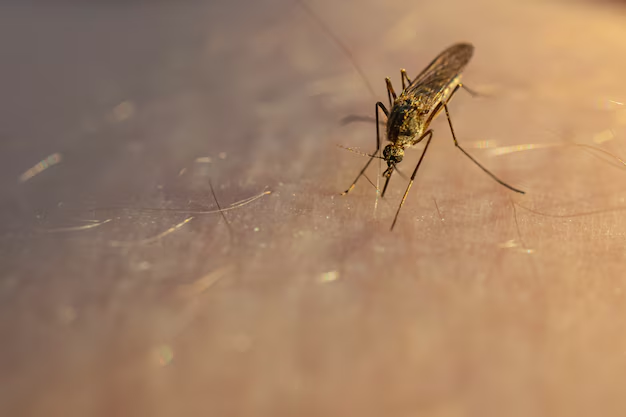Unveiling the Mysteries: How Malaria Spreads and What You Need to Know
Malaria, a disease with ancient roots, remains a modern-day public health challenge affecting millions around the globe. But how exactly is this disease transmitted? In this article, we unravel the intricacies of malaria transmission, provide practical insights, and highlight what can be done to control its spread. Let's dive into the world of mosquitoes, parasites, and protective measures.
The Buzz About Malaria: Transmission Basics
Malaria is a vector-borne disease, primarily caused by Plasmodium parasites. These parasites are transmitted to humans through the bites of infected female Anopheles mosquitoes. Understanding the nature of these mosquitoes and the lifecycle of the parasites is crucial for grasping how malaria spreads.
The Culprit: Female Anopheles Mosquitoes
Not all mosquitoes transmit malaria. The female Anopheles mosquito is the only species capable of spreading the disease. This mosquito takes a blood meal for the nutrients necessary to develop her eggs. During this process, if the mosquito carries the Plasmodium parasite, it can be transferred to humans.
- Nocturnal Biters: Anopheles mosquitoes typically bite during the evening and nighttime, making these hours particularly risky for transmission.
- Global Presence: While more prevalent in tropical and subtropical regions, Anopheles mosquitoes are found in various parts of the world, contributing to the disease's widespread impact.
The Parasite's Journey: From Mosquito to Human
The malaria parasite's lifecycle is a remarkable journey with several stages:
- Sporozoites in Saliva: Once an infected mosquito bites a human, sporozoites (the infectious form of the parasite) are injected into the bloodstream.
- Liver Stage: The sporozoites travel to the liver, where they multiply and mature into merozoites.
- Blood Stage: Merozoites re-enter the bloodstream, invade red blood cells, and multiply further, causing the symptoms associated with malaria.
- Gametocytes: Some merozoites develop into gametocytes, which can be picked up by another mosquito during a bite, completing the cycle.
Beyond the Bite: Factors Influencing Malaria Transmission
While the mosquito bite is a clear pathway for malaria transmission, several factors affect the spread of the disease. These include environmental, biological, and social aspects.
Environmental Factors
- Climate and Weather: Malaria transmission is closely linked to climate conditions. Warm temperatures and high humidity provide ideal environments for mosquito proliferation.
- Stagnant Water: Mosquitoes breed in stagnant water sources such as ponds, marshes, and even puddles, making effective water management crucial in controlling mosquito populations.
Biological Factors
- Parasite Resistance: Some Plasmodium species have developed resistance to antimalarial drugs, complicating treatment efforts and facilitating ongoing transmission.
- Genetic Immunity: Certain genetic traits in humans, such as sickle cell trait, offer partial protection against malaria, affecting its spread within populations.
Socioeconomic Factors
- Access to Healthcare: Limited access to healthcare services in some regions can delay diagnosis and treatment, leading to higher transmission rates.
- Public Health Initiatives: Effective malaria control often depends on the implementation of comprehensive public health policies, including mosquito control measures and community education.
Protecting Yourself and Your Community
Understanding how malaria spreads is the first step toward protection. Here are several strategies to reduce your risk and prevent malaria transmission.
Personal Protection
- Use of Insect Repellents: Applying insect repellents containing DEET, picaridin, or oil of lemon eucalyptus can provide personal protection against bites.
- Wearing Protective Clothing: Long-sleeved shirts and long pants can reduce skin exposure to mosquito bites, especially during peak biting hours.
Vector Control
- Bed Nets: Sleeping under insecticide-treated bed nets is a highly effective method of preventing bites and reducing transmission.
- Indoor Residual Spraying: Spraying insecticides inside homes kills mosquitoes and offers community-level protection.
Community and Global Efforts
- Healthcare Access: Initiatives to improve access to diagnostic and treatment services play a crucial role in controlling malaria spread.
- Vaccination: Advances in malaria vaccines, such as RTS,S, offer potential in reducing transmission and improving immunity in affected populations.
Practical Insights: Taking the Next Steps
Armed with this knowledge about malaria transmission, you can take informed steps to protect yourself and advocate for your community.
- Check Local Recommendations: If living in or traveling to endemic areas, consult health advisories to understand current risks and recommended protective measures.
- Support Public Health Initiatives: Engage with initiatives aimed at providing education, improving sanitation, and enhancing healthcare access.
- Stay Informed: Remaining updated on advancements in malaria research and potential vaccines increases awareness and preparedness.
By understanding how malaria is spread and what factors influence its transmission, you can make informed decisions to protect yourself and others. Cooperation between individuals and communities is key to combating this global health challenge.
Quick Summary: 🌍 Unpacking Malaria Transmission
- Vector Transmission: Malaria is spread through female Anopheles mosquito bites, mostly active at night.
- Environmental Impact: Climate, stagnant water, and breeding sites promote mosquito proliferation.
- Protection Strategies: Use insect repellents, wear protective clothing, and utilize bed nets.
- Community Action: Advocate for healthcare access, support vaccination efforts, and participate in public health programs.
- Stay Informed: Keep track of local malaria risks and ongoing research advancements.
By understanding and applying these insights, individuals and communities can take proactive steps to reduce malaria transmission and protect public health. 🚫🦟💪
